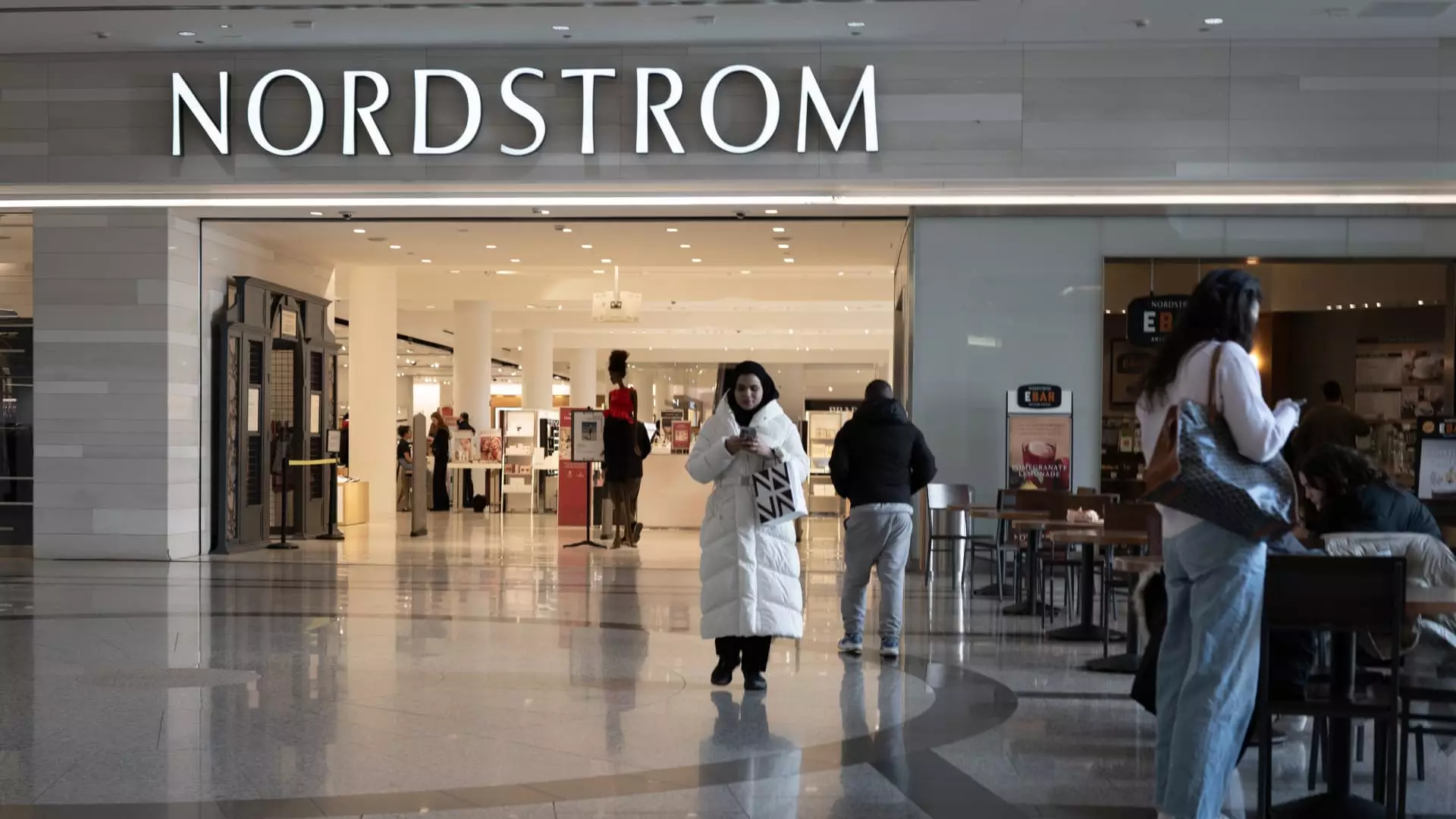In the competitive retail landscape, where consumer preferences shift at breakneck speed, Nordstrom has recently showcased a noteworthy performance that defies the broader trends affecting discretionary spending and luxury goods. Despite prevailing economic uncertainties, the Seattle-based retailer reported a 4% year-over-year increase in quarterly revenue, driven mainly by robust sales in clothing, footwear, and activewear. This article aims to dissect Nordstrom’s recent financial results and strategic positioning while examining the broader implications for the retail sector as the holiday season approaches.
During its latest earnings report, Nordstrom surpassed Wall Street expectations with a revenue of $3.46 billion—outpacing analyst predictions of $3.35 billion. The retailer’s performance reflects a significant uptick in consumer spending, particularly in women’s apparel and activewear, both categories experiencing double-digit growth. However, in a move that signals cautious optimism, the company adjusted its full-year revenue forecast to a range of flat to 1% growth, a slight improvement from the previously anticipated decline.
CEO Erik Nordstrom’s remarks highlight a dual narrative: while positive results reflect the success of targeted marketing efforts aimed at selective shoppers, the acknowledgment of a sales decline in late October raises questions about sustainability. Retailers are facing a critical juncture as they navigate evolving consumer habits and economic pressures, necessitating a careful balance between aggressiveness in pursuit of sales and a realistic understanding of market conditions.
Consumption Trends and Economic Pressures
Despite Nordstrom’s encouraging numbers, recent industry-wide reports indicate a marked shift in consumer behavior. Retail giants like Walmart and Best Buy have noted a growing trend of selectivity in consumer purchases, particularly with non-essential items. Amid rising inflation and economic uncertainty, shoppers are becoming increasingly price-sensitive and discerning, preferring essentials over luxury goods. Therefore, Nordstrom’s ability to generate sales growth in this climate is even more noteworthy and serves as a testament to its brand positioning.
Moreover, Nordstrom’s strategic layering of brands—with its off-price Nordstrom Rack chain working synergistically with its luxury department store—has proven effective in capturing a broader market segment. As customer spending patterns evolve, the retailer’s dual-brand strategy allows it to cater to varying levels of consumer disposable income, thus expanding its reach in an uncertain economic landscape.
Nordstrom’s quarterly performance was further complicated by a calendar shift concerning its Anniversary Sale, which likely impacted sales figures. Last year’s sale encompassed eight days within the reporting quarter, while this year’s window was condensed to just one day, introducing a negative sales variance of approximately 1%. Retailers reliant on seasonal promotions must remain agile, responding to abnormal calendar shifts and external pressures from competitors who may be attempting to capture the same market share.
This competitive landscape was underscored by Macy’s recent announcement of a sales decline, reflecting the challenges faced across the industry. As companies struggle to maintain momentum, Nordstrom’s relatively stable performance becomes a pivotal point of reference for investors and consumers alike, providing insights into effective market strategies during challenging times.
Adapting to Digital Transformation
As with many contemporary retailers, Nordstrom has invested significantly in its digital transformation. E-commerce sales rose by 6.4% year-over-year, now constituting around one-third of total revenue. The company has bolstered its online shopping experience through enhanced website features and expanded third-party marketplace offerings, aligning with consumer expectations for convenience and variety. Such initiatives reflect a recognition of shifting demographic preferences as technology plays an increasingly dominant role in shopping behavior.
Additionally, the introduction of online-to-offline service offerings—like buy online, pick up in-store—demonstrates an adaptable framework poised to meet consumer demands. The integration of digital capabilities can provide Nordstrom with a competitive edge, crucial for appealing to younger, tech-savvy consumers who prioritize seamless shopping experiences.
Despite the challenges that lie ahead in a volatile economic climate, Nordstrom has positioned itself as a resilient player in the retail space. By balancing cautious optimism with strategic initiatives in e-commerce and customer engagement, the retailer has managed to navigate recent sales hurdles effectively. As the holiday season approaches, its performance will serve as a litmus test for industry resilience and adaptability in the face of ever-changing consumer dynamics. As Nordstrom moves forward, its ability to stay attuned to market trends and customer preferences will be paramount in maintaining its upward trajectory in the retail arena.

